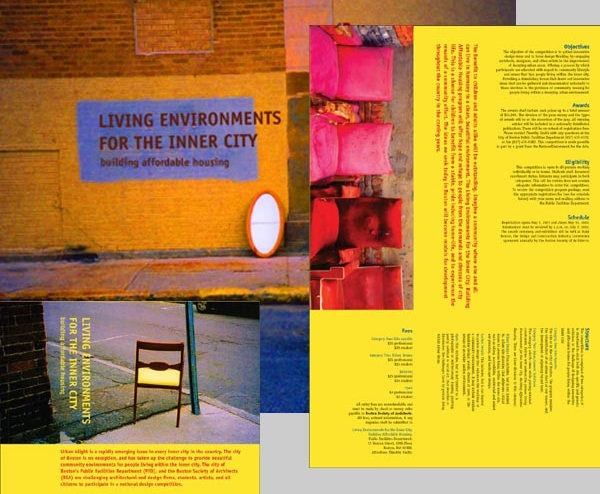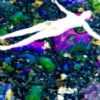
No Place Like Home
Written by Desiree Seeman | Posted by: Anonymous
After graduating from the University of California, Santa Cruz, Helena Schniewind distanced herself from Hollywood — literally. As a freshly minted film major, she found no inspiration in Los Angeles and instead joined Boston’s eclectic film community. But in fleeing the "machine," as she called it, Schniewind was really coming home. The Massachusetts native resettled in Somerville, and now, a decade after her return, has returned to her film roots.
By day, Schniewind is a freelance graphic designer, but her visual orientation and creative instincts also manifest themselves in experimental film installations and live video manipulation performances. This month, she’ll be showing both her genres to local audiences.
DS: On July 10th you’ll be participating in a screening at the Boston Public Library, put on by Women in Film and Video New England (WIFV/NE). The program showcases the work of experimental filmmakers, so how do you define "experimental?"
Schniewind: For the most part, I think it means non-narrative, very non-traditional filmmaking. It’s really a catch-all kind of a phrase because we’re all doing different things. I am mostly interested in camera work, so I play a lot with imagery. I basically try to use my video camera as a paintbrush — I like creating moving paintings. The piece that I’m showing at the library is intended to be an installation.
DS: What is the piece?
Schniewind: It’s called "Fuzzy" in which a 10-day-old kitten suddenly becomes aware of the weight of its existence. It’s a bunch of 10-day-old kittens in a cat box nursing. It’s about five minutes long, and the soundtrack is a bunch of layered purring noises. So you just have this fur — moving, undulating fur — and this purring noise. And at one point one of the cats looks up with this imploring look on its face. When I saw that footage I thought, "Oh my god, this cat is having a cathartic moment! Poor 10-day-old kitten. It’s questioning why it decided to be here."
DS: If "Fuzzy" was intended to be an installation, why did you decide to participate in this screening?
Schniewind: WIFV/NE approached me. I’ve been a member for about two years and more experimental filmmakers have joined them recently, so they wanted to put together a show.
DS: I’ve noticed WIFV/NE is only one of your professional affiliations, and having a sense of community with a support structure appears to be very important to you. What do you think of Boston’s film community?
Schniewind: Well, it’s weird. Being in experimental film you’re kind of towing the line between the film scene and the art scene — we don’t fit nicely into either category. But because I’ve been involved in both scenes I think I feel more of a sense of a greater arts community in Boston than a lot of people do. There are so many artists in this community, but it’s really disjointed. People don’t necessarily talk to each other and aren’t aware of other people that do the stuff they do. But if you put your feelers out there, you do start moving around and seeing how everyone is connected.
DS: How have you done that?
Schniewind: I’ve had to seek it out. I’m a big networker, because word of mouth is the only way I’ve ever gotten anything done. But I think it’s also why I wasn’t doing my own work for so long. I was so interested in meeting other people and connecting them, that it took over. I joined a video art collective called VideoSpace, which is a bunch of video artists whose main focus is presenting shows of other people’s work — not our own.
Then, after I’d met everyone in VideoSpace they said, "We’ve got a screening. You should show some of your work." But I had to say, "Well, I don’t have any. I’m not a video artist." So I was fortunate. I imagine a lot of artist would be jealous of having the opportunity to show, instead of scrambling trying to get their work shown. So I started creating stuff and I’ve been doing that for about five years now. I love it.
DS: How have your peers responded to the work you’ve been doing?
Schniewind: That’s actually been a nice thing about the community. People have been really receptive now that I’m showing, but they didn’t really realize that they hadn’t seen my work! I’ve been around and had my finger in so many different pies that they just assumed they had.
DS: You’re also a graphic designer, correct?
Schniewind: Yes, I’ve been doing design as my main career focus for about three years. But I’m all over the place. My main focus is actually a performance group called ElectroVideoMove. It’s my favorite part of the video stuff that I do.
DS: What exactly is ElectroVideoMove?
Schniewind: We’re a group of DJs, VJs and dancers. My contribution to our performances is live video manipulation, shooting the dancers and projecting it behind them. We’ve done a couple of shows at the Zeitgeist and some in New York. We’re going to be at the Philly Fringe Festival in September and we’re performing at the Somerville ArtBeat festival on July 17th.
DS: It seems that commercial success isn’t really a goal of yours. So what do you think is the purpose or benefit of screening your work?
Schniewind: Screenings have worked as a publicity vehicle for me. It’s getting my name out there. For video art, because my piece is an installation, it’s for sale. People can buy it if they want — I burn them a DVD and they can have purring cats in their house. But there are a lot of different reasons. The more screenings, performances at festivals, and installations at galleries — any of these exhibitions of my work help me if I want to apply for a grant or go apply for a residency somewhere. It’s pretty hard to get those if you don’t have a list of places where your work has been shown.
And I think ultimately for me as an artist, it’s about people interacting with the work. I’m not just doing it for myself. It’s there for people to see, and I really love seeing how they react and interpret my work.
DS: What is your ultimate goal for yourself?
Schniewind: As a video artist, some people might really want their work to be in the permanent collection of MOMA. I don’t have any grand plans like that. It would be great for my art to be recognized. But as long as I’m keeping busy and enjoying myself, that’s all that really matters to me. I don’t need to be famous.
For more information about Helena Schniewind and her work, visit: http://www.opticnoodle.com. For more information about Women in Film Video, New England, visit www.wifvne.org.










